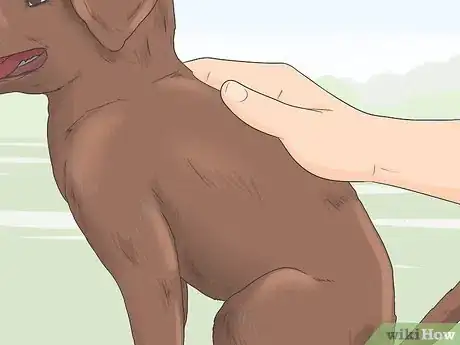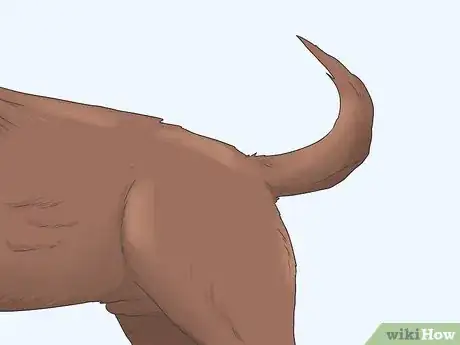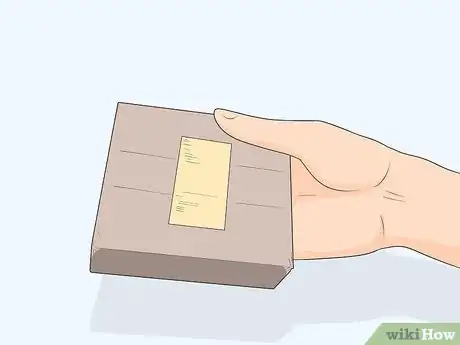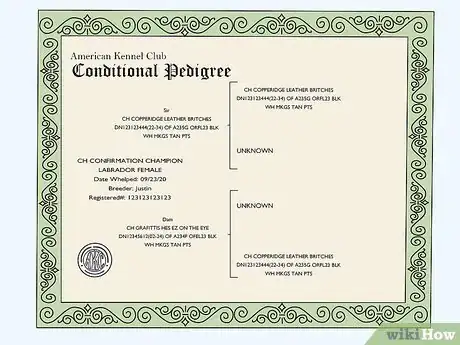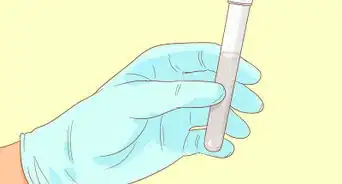This article was co-authored by Pippa Elliott, MRCVS and by wikiHow staff writer, Janice Tieperman. Dr. Elliott, BVMS, MRCVS is a veterinarian with over 30 years of experience in veterinary surgery and companion animal practice. She graduated from the University of Glasgow in 1987 with a degree in veterinary medicine and surgery. She has worked at the same animal clinic in her hometown for over 20 years.
There are 11 references cited in this article, which can be found at the bottom of the page.
This article has been viewed 195,910 times.
Labrador retrievers are an adorable and popular dog breed that can make a great addition to your household. If you’re uncertain if a certain puppy is purebred, there are several ways you can check. Aside from a physical examination, you can do a professional DNA test on the dog to check its genetic makeup. If you want to be extra certain of a puppy’s background, you can use its parents’ DNA to get a pedigree chart of the pup’s family tree.
Steps
Examining the Physical Features
-
1Pet the dog to see if it has a water-resistant coat. Run a hand over the puppy’s fur and stroke the animal’s back. Does the fur appear short, and have a thick texture? If not, there’s a good chance that the puppy is not a purebred Labrador.[1]
- Since Labradors were originally bred to be water dogs, their coats are resistant to water.
-
2Examine the puppy for a thick, sturdy tail. Look above the puppy’s butt to find the tail. Is it thick, and similar to an otter’s tail? Look closely to see if it’s thick at the base, and growing thinner toward the tip. If the puppy’s tail is narrow and spindly, it likely isn’t a purebred.[2]
- Keep in mind that the pup’s tail will become larger and thicker as it grows older.
Advertisement -
3Look for an angular head with moderately-sized muzzle. Examine the puppy’s skull shape, observing where the forehead gradually slopes into the muzzle. Does the dog’s head look more triangular, or have an especially stubby muzzle? If so, there’s a possibility that your dog isn’t a purebred.[3]
- A puppy’s features will naturally be less pronounced than an adult Labrador’s. While you’re observing the dog, pull up a stock picture of a definite purebred Labrador puppy to make a more accurate comparison.
-
4See if the puppy has a black, brown, or gold coat. Check that the puppy (and any other pups in the litter, if relevant) don’t have any colorful patterns on the fur, such as part 1 color and part another or with white flashes in their fur. The puppy’s coat should be 1 solid color, such as black, chocolate brown, or golden-yellow. The exception is a small patch of white on the chest. If the puppy is any other color, there’s a good chance that it’s a mixed breed pup.[4]
Did you know? There are silver labs, but silver is not an acceptable color in the breed standard as this color is believed to have come from a cross with the Weimaraner. However, dogs with this coat color may still be registered with certain kennel clubs.
-
5Check if the dog’s eye color is brown or hazel. Look into the pup’s eyes to examine the color. If the dog is a yellow or black lab, check that the puppy has brown eyes. In the case of chocolate labs, check for brown or hazel eyes.[5]
- In the past, some purebred labs have had yellow-green eyes.
-
6Search for a pup with muscular, average-sized legs. Look toward the dog’s rear to see if the puppy has thick hind legs roped with muscle. Check to see how long its legs are; while a Labrador should have longer legs than a Dachshund, its legs should be shorter than a Husky.[6]
- When examining a puppy’s legs, compare it to a puppy of a different breed. A young dog’s legs will definitely be shorter than those of an adult Labrador.
Getting a DNA Test
-
1Swab the puppy’s mouth to get a DNA sample. Purchase a dog genetics test, which will give you a specialized testing kit. Use the provided swab to wipe up a good sample of the puppy’s saliva or the cells inside their cheek depending on the instructions that came with your kit. Check the instructions on your DNA kit to see if there’s anything else you need to collect or fill out before getting the sample ready to mail.[7]
- Dog DNA kits can be purchased online. They generally range in price from $70 to $200, depending on how detailed your test is. Some DNA tests will look for genetic markers, while cheaper tests focus more on the different breeds.
Tip: Try to keep the puppy from sharing food or playing rough with the other dogs, as this might hurt the integrity of the saliva sample.
-
2Send the sample to a professional analysis company. Package the saliva sample according to the instructions given by the company. Seal the envelope or package carefully, so the sample is completely secure while it travels to the lab.[8]
- If you’re confused about any step of the packaging process, feel free to call or email the analysis company for assistance.
-
3Wait for the test results to come back in 6 weeks. Don’t expect your results in the mail after a day of waiting—or even a week. Expect to wait about 1½ months before hearing anything back from the analysis company. If you‘ve waited several months without hearing or receiving anything from the company, contact the lab to check on your sample.[9]
-
4Read the percentages listed in the report to find out the dog’s breed. Generally, you can find the test results listed by breed, followed by a percentage; however, this might differ, depending on the company. If your results contain extremely high Labrador percentages, then you most likely have a purebred puppy![10]
- Nearly all DNA tests are at least 95% accurate. If you aren’t happy with your results, you probably aren’t going to receive a different score with an additional DNA test.[11]
- Mixed dog panels will have multiple breeds listed with smaller percentages (e.g., 25% Border Collie, 37.5% Basenji, 12.5% German Shepherd, etc.).[12]
Analyzing the Parentage
-
1Obtain a DNA sample from the puppy’s parents. Ask the breeder or shelter officials if you can see the puppy’s mother and/or father. If this is possible, use a cotton swab to collect saliva samples from 1 or both parents. Store these samples carefully, so you can send them to a professional company.[13]
- Most DNA kits give you specialized swabs that help you collect the saliva sample.
- Even if you can’t swab both parents, just 1 can provide a lot of insight into the puppy’s pedigree.
Tip: In many cases, the puppy’s parents might be unknown or unavailable. In this event, it’s better to get a DNA test from the puppy.
-
2Mail the samples to a company specializing in pedigree analysis. Package the samples according to the lab’s instructions. Seal the envelope or package carefully to secure the sample, and keep it safe in transit.[14]
- If you have any questions about this process, feel free to contact the lab processing the DNA samples.
- You’ll have to wait several weeks to receive a pedigree chart.[15]
-
3Check the chart for abbreviations like “CH.” Once you receive the pedigree results in the mail, look for shorthand that indicates the puppy’s hereditary talents, like “CH” (Confirmation Champion), “FC” (Field Champion), or “MACH” (Master Agility Champion). Additionally, examine the chart for any information on the puppy’s health history, as some dogs can be prone to certain conditions and illnesses.[16]
- Seeing a CH or confirmation champion title on the pedigree certificate means that the dog is close to the ideals in the breed standard and is related to a dog that was able to win over other dogs at a show with at least 15 conformation points.[17] A dog with this lineage can make a great candidate for showing.
- Ask a vet if you have any questions about the puppy’s pedigree chart.
-
4Purchase a pedigree certificate from the American Kennel Club. If your dog has documented parentage with the American Kennel Club, you can search their database and purchase a certificate that affirms this. You can also register your dog through the American Kennel Club once you have proof of their pedigree.[18]
- Fees for pedigrees very depending on the type. For example, a 3-generation pedigree costs $25, while a 4-generation pedigree costs $34, and a 3-generation export pedigree, which allows you to enter your dog into shows in other countries, costs $69.[19]
- When you purchase a puppy, make sure to ask to see the dog’s family tree and the parents’ pedigrees as well.
References
- ↑ https://www.akc.org/dog-breeds/labrador-retriever/
- ↑ https://www.akc.org/dog-breeds/labrador-retriever/
- ↑ https://www.akc.org/dog-breeds/labrador-retriever/
- ↑ https://thelabradorclub.com/
- ↑ https://www.dogbreedinfo.com/labrador.htm
- ↑ https://www.akc.org/dog-breeds/labrador-retriever/
- ↑ https://www.goodhousekeeping.com/life/pets/a27117714/best-dog-dna-kit/
- ↑ https://www.goodhousekeeping.com/life/pets/a27117714/best-dog-dna-kit/
- ↑ https://www.goodhousekeeping.com/life/pets/a27117714/best-dog-dna-kit/
- ↑ https://www.caninejournal.com/dog-dna-tests-reviews/
- ↑ https://www.goodhousekeeping.com/life/pets/a27117714/best-dog-dna-kit/
- ↑ https://www.whole-dog-journal.com/behavior/instincts-dna/dog-dna-tests-mixed-results/#
- ↑ https://www.thekennelclub.org.uk/health/for-breeders/dna-profiling-parentage-analysis/
- ↑ https://www.thekennelclub.org.uk/health/for-breeders/dna-profiling-parentage-analysis/
- ↑ https://www.akc.org/expert-advice/dog-breeding/discover-dogs-family-tree-akc-certified-pedigree/
- ↑ https://www.akc.org/expert-advice/dog-breeding/discover-dogs-family-tree-akc-certified-pedigree/
- ↑ https://www.akc.org/sports/titles-and-abbreviations/
- ↑ https://www.akc.org/register/pedigree/
- ↑ https://www.akc.org/register/pedigree/certified-pedigree/
